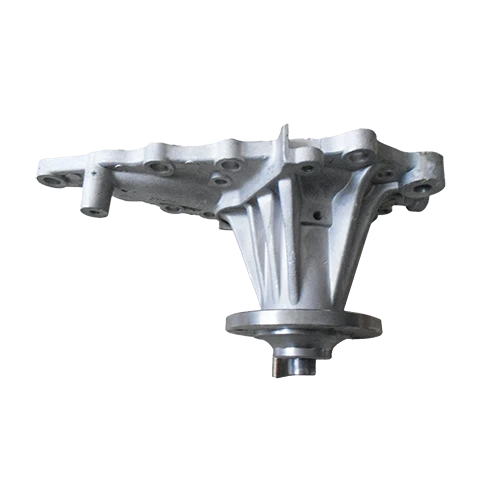Mobile:+86-311-808-126-83
Email:info@ydcastings.com
lost foam aluminum casting
Lost Foam Aluminum Casting A Revolutionary Process in Manufacturing
Lost foam aluminum casting is an innovative manufacturing technique that has gained significant traction in recent years. This method offers numerous advantages over traditional casting techniques, making it a preferred choice for many industries involved in the production of complex metal parts. This article will explore the process of lost foam casting, its benefits, and its applications in various fields.
At its core, lost foam casting is a method that combines the principles of traditional sand casting with the flexibility of foam modeling. The process begins with creating a foam pattern of the desired part. This pattern is typically made from expanded polystyrene (EPS) or similar materials, which can be easily shaped and molded. Once the foam pattern is created, it is coated with a thin layer of refractory material to provide additional strength and insulation during the pouring process.
The key innovation in lost foam aluminum casting comes from the foam pattern's ability to vaporize when molten aluminum is poured into the mold. As the aluminum fills the cavity, the foam disintegrates and evaporates, leaving behind a precise metal replica of the original pattern. This elimination of the pattern leaves a smooth surface finish and intricate details, which can significantly reduce the need for subsequent machining.
One of the most significant advantages of lost foam aluminum casting is its ability to produce complex geometries that would be challenging or impossible to achieve with traditional methods
. Manufacturers can create lightweight, yet structurally sound parts, which is particularly beneficial in industries such as automotive and aerospace, where reducing weight without compromising strength is critical. The capability to integrate multiple features into a single casting can also streamline production processes and reduce material waste.lost foam aluminum casting

Another advantage of this casting method is the reduction of tooling costs. Traditional casting often requires expensive molds, which can take a long time to create and may require modifications for each production run. In contrast, lost foam casting uses foam patterns that are relatively inexpensive and quick to produce. This flexibility allows manufacturers to adapt to changing design requirements without incurring significant additional costs.
Furthermore, lost foam aluminum casting can lead to improved environmental sustainability. The process generates less waste compared to traditional casting methods, and the materials used, such as polystyrene, can often be recycled. Utilizing aluminum, a highly recyclable material, also aligns with modern sustainability goals, making this method appealing to environmentally conscious manufacturers.
The applications of lost foam aluminum casting are extensive. In the automotive industry, it is commonly used to produce engine blocks, transmission cases, and other components that require precision and lightweight structures. In aerospace, this method is increasingly employed for producing intricate components that contribute to fuel efficiency and overall performance. Additionally, consumer goods, industrial equipment, and decorative elements have also benefitted from the advantages of lost foam casting.
In conclusion, lost foam aluminum casting represents a significant advancement in the field of manufacturing. By combining flexibility, cost-effectiveness, and the ability to create complex shapes, this method has revolutionized the way metal parts are produced. As industries continue to evolve and demand more from their manufacturing processes, lost foam aluminum casting stands out as a solution that meets these challenges head-on, offering a pathway toward efficiency and sustainability. With its growing popularity, the future of lost foam casting looks promising, paving the way for innovation across various sectors.
-
Understanding Metal Casting TechniquesNewsApr.02,2025
-
Understanding Exhaust Manifolds for Enhanced Engine PerformanceNewsApr.02,2025
-
The World of Metal FabricationNewsApr.02,2025
-
Key Components for Pump and Turbo EfficiencyNewsApr.02,2025
-
Essential Tools for Automotive Maintenance and RepairNewsApr.02,2025
-
Durable Valve Components for Effective Water ManagementNewsApr.02,2025











